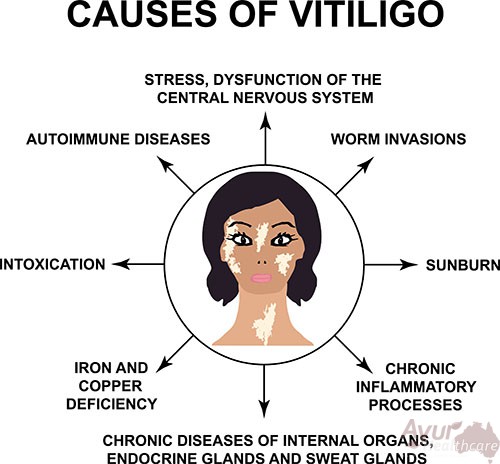
There are several treatments for vitiligo, and the best are a combination of both of these. Successful treatment often results in lighter skin, better mental health, and a lower risk of depression and suicide. It also results in less visible white patches. Patients with successful treatment often have lower self-esteem and a lower risk of suicide. They can enjoy better hearing and reduced social anxiety. There are also many potential causes of vitiligo, including autoimmune disease.
In some cases, vitiligo is caused by emotional stress. Although the causes are unclear, researchers believe that emotional stress is a cause of vitiligo. These factors are likely related to hormonal changes. People with vitiligo often have elevated levels of catecholamines in their urine. These chemicals are secreted by melanocytes. These nerves are responsible for controlling color in fish. However, they are not present in mammals. Hence, some physicians have reported that a nerve injury results in a significant improvement on the affected side. Other physicians, however, have found that the opposite is true.
Some people have a genetic predisposition to the disease, making it difficult to identify. Since vitiligo develops at an early age, it can affect the quality of life. In addition, a person suffering from this disease may face stigma. Because vitiligo is so visible, it is difficult to hide it. Often you are teased or embarrassed by family members and friends.
There is no known cure for vitiligo, but the right treatment is possible. A combination of oral medications and topical treatments may help. The first type of treatment is the only way to prevent the progression of vitiligo. There are no known natural treatments for this disorder, and the patient must be diagnosed before starting any treatment. If vitiligo progresses, treatment may take longer.
In the past, the American Academy of Dermatology (AAD) referred to similar depigmentation as Amarakosa in Japanese Shinto prayers around 1200 BC. The earliest medical reference to vitiligo can be found in the Bible, which was translated from Hebrew into Greek in 250 BC. The word zaraat, meaning "scales," is a mistranslation of the word leprosy.
Vitamin A and vitamin D are essential to prevent vitiligo. These vitamins are important for keeping the skin healthy, as they can improve the appearance of vitiligo. It is recommended to take supplements containing these vitamins as they contain antioxidants that help the body fight infections. It is important to avoid sunlight during pregnancy because ultraviolet radiation can cause vitiligo. Even if treatment is successful, vitiligo can progress.

Although vitiligo is a serious condition, there are ways to treat vitiligo. Although there is no cure for vitiligo, a growing number of treatment options can minimize the appearance of white patches on the skin. But some of these treatments can cause negative side effects. Therefore, it is important to choose the right treatment for your particular case. There is no cure for vitiligo, but it is treatable. Read more about possible treatment options for vitiligo at microcephaly.co.uk.
The symptoms of vitiligo vary greatly from person to person. However, the most common treatments involve changing the diet. There are also various treatments for vitiligo. The most important treatment for vitiligo is the pain and discomfort associated with it. In the worst cases, treatment may only be temporary, but it will not cure the underlying disease. It is a life-changing condition that can be treated with medication.
Available treatments for vitiligo include topical creams, dietary changes, and psychological counseling. Fortunately, most treatments for vitiligo are based on proven prescriptions approved by city, provincial, or federal drug authorities. But they can also have serious side effects. You should consult your doctor if you have a severe case of vitiligo. Site myfoodindustry.com
will also help you find the right treatment for your particular condition.
In rare cases, the patient will suffer from non-segmental vitiligo. The most common form of vitiligo is nonsegmental, caused by an autoimmune process. In these cases, genetics play a role in the development of vitiligo. Interestingly, non-segmental vitiligo is not life-threatening, but it can cause stress. This can affect a person’s self-esteem.